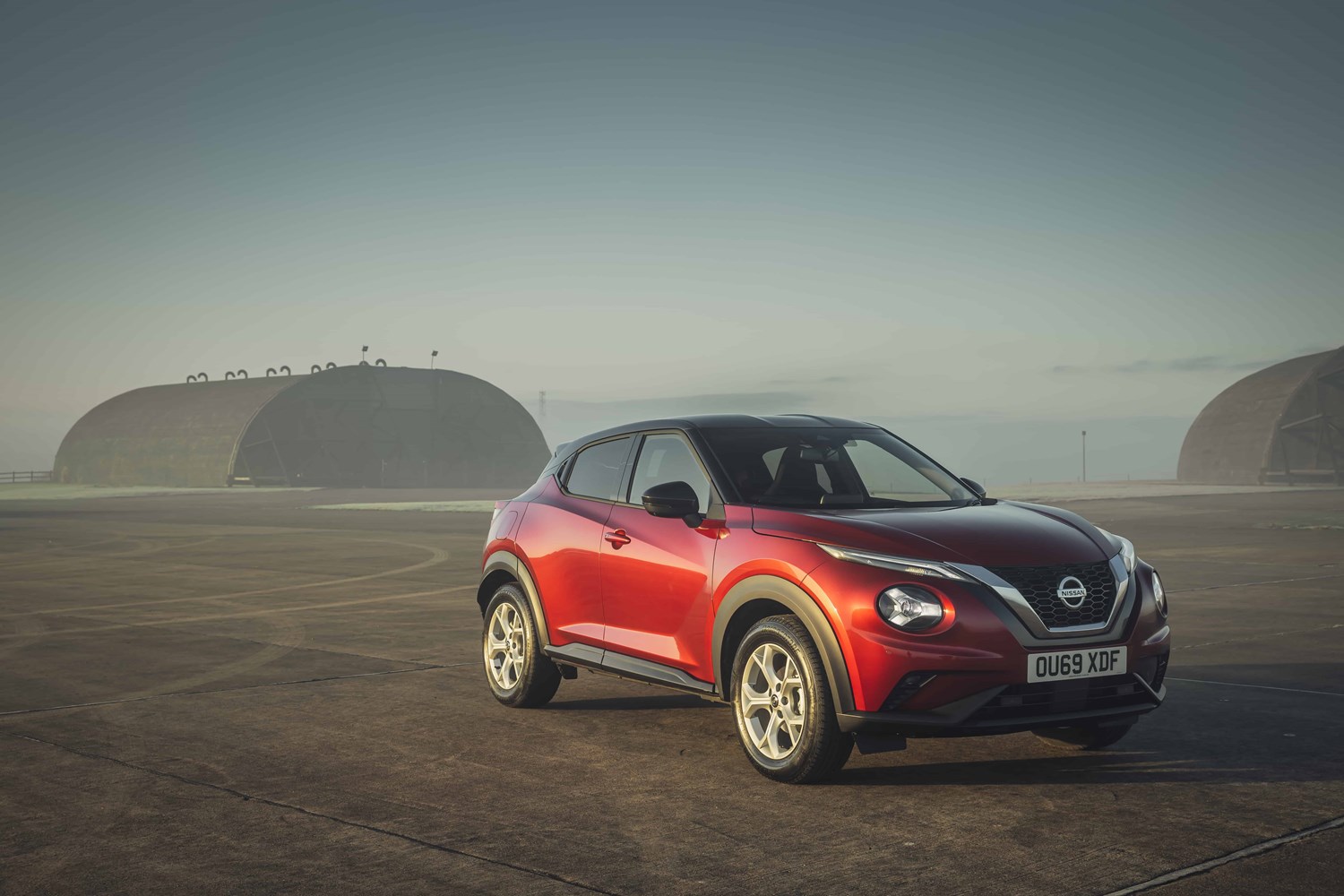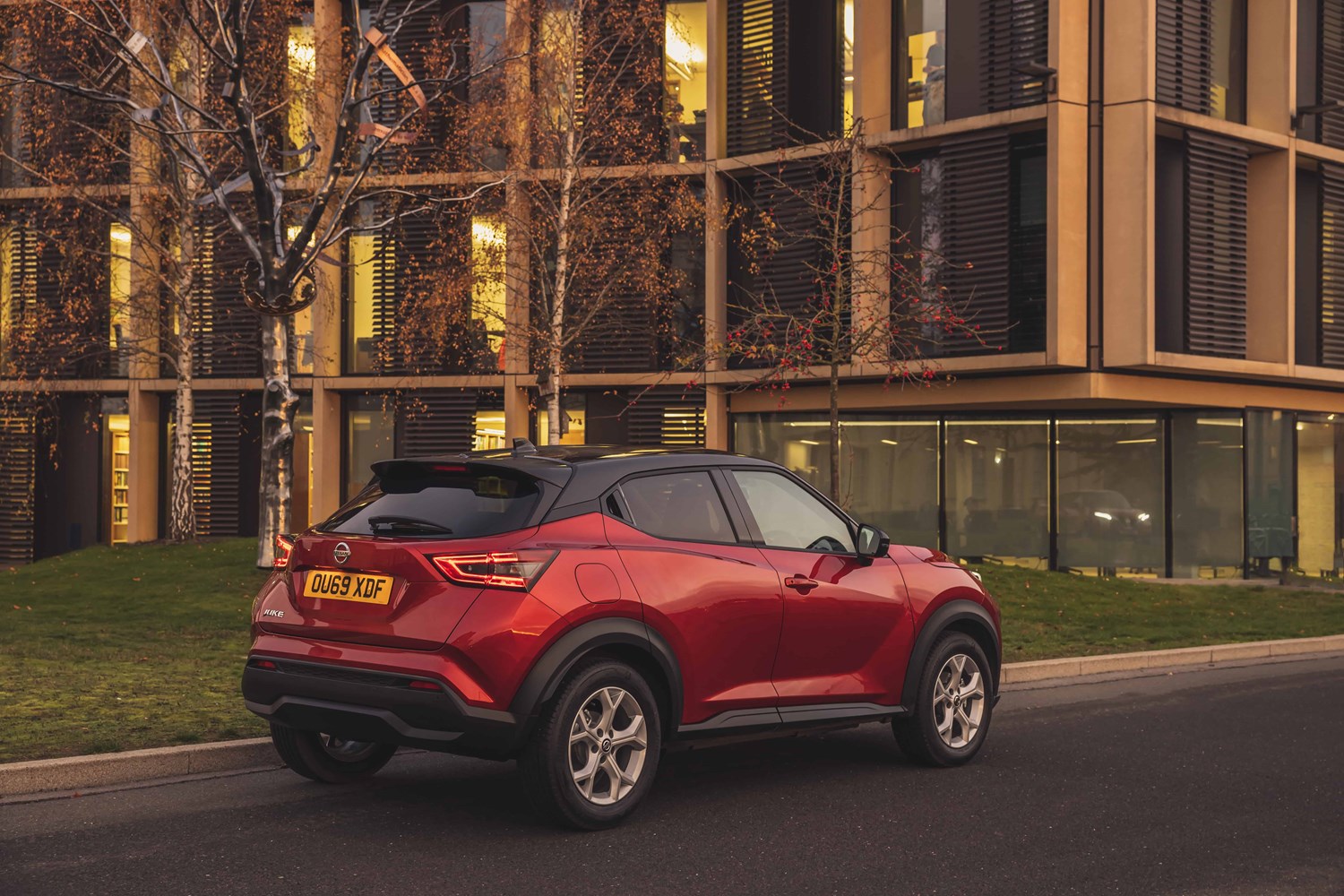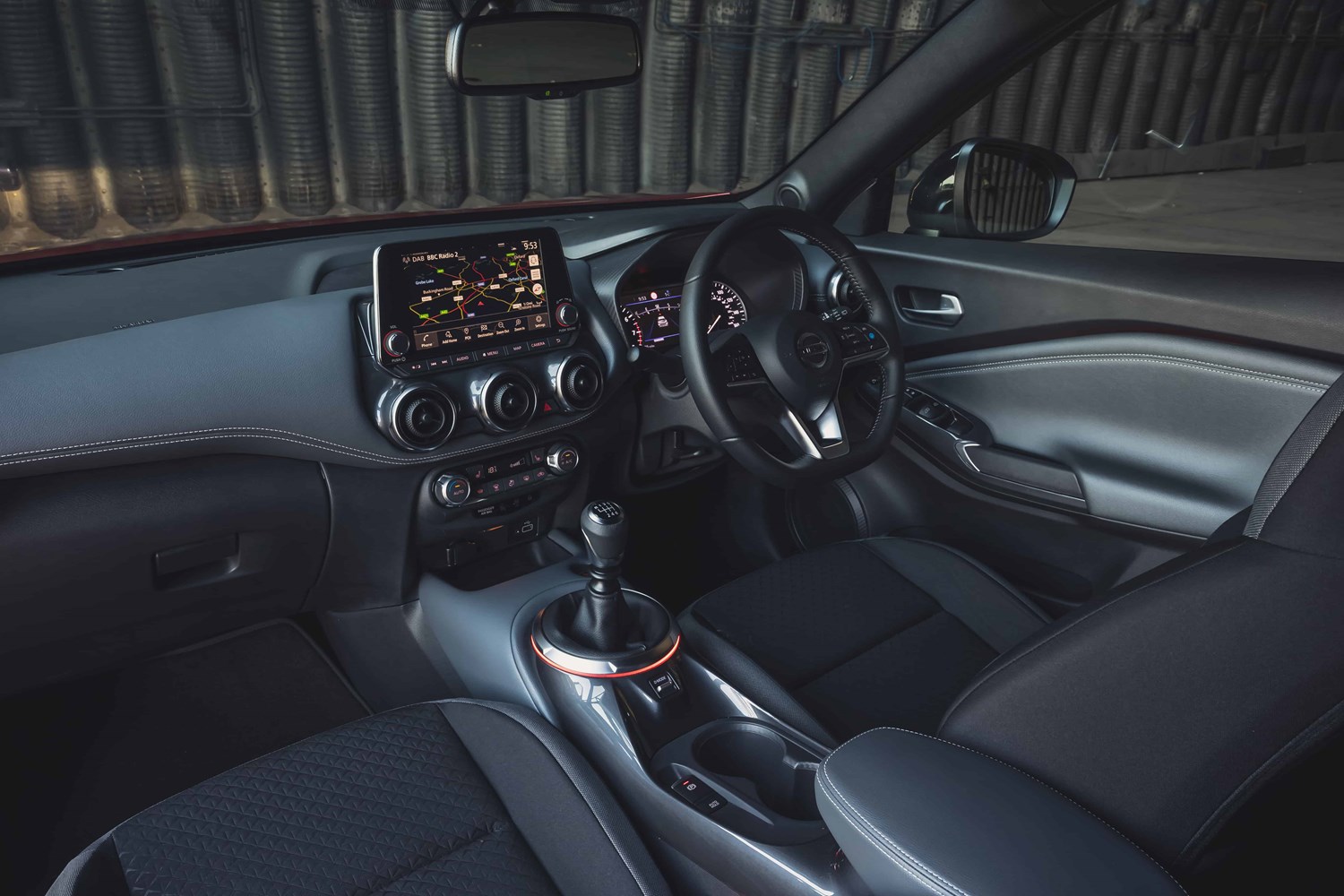Latest model
While many rival manufacturers are playing a game of catchup with launching their first compact crossovers, Nissan is already on its second generation with the Juke. That means it was able to rectify all off the issues from the first model.
Launched in 2019, the new version of the Juke maintained the same profile as the first generation, but whereas the original had a love-it-or-hate-it look, the second generation is far more conservative. And while the styling has been sharpened, it’s also grown in size – being 35mm wider and having a wheelbase that’s 105mm longer. That’s good news for rear passengers who now get more head and leg room.
The British-built Juke has also taken a leap upmarket – particularly with the interior, with the materials and seats feeling more premium than before, with leather and Alcantara in abundance.
Value for money
The latest Juke continues to offer good value for money with basic models starting at £17,440, and while they come with alloy-wheels, air conditioning and daytime running lights, it’s worth upgrading to a mid-spec to add Bluetooth or USB port for your phone. Top-spec models are a bit pricey, though, with the flagship Premiere Edition available from £24,040, which is quite a lot of money, though you do get loads of standard kit.
If you’re looking at the original Juke, models start from as little as £3,500, though it’s worth opting for one of the post-2014 facelifted models, as the technology noticeably improved, increasing value for money with it. Expect to pay around £5,500 for the cheapest versions.
As the latest Juke hasn’t been in showrooms long, prices remain high, but you can still expect to save several thousand pounds off a new model by looking at a six-month-old or ex-demonstrator example.
Looks and image
The original Juke was unique when it first went on sale, and the fact that its looks were so different to anything else on the market made it popular with some, but a turn off for others. What made it stand out was its many personalisation options, with numerous colour-coded combinations to choose from.
With more competition than ever before, Nissan has played it safe with the second-generation – giving it a much more conservative look, with narrow ‘conventionally placed’ lights at the front rather than the raised Z car inspired offerings in the original. The rear end has the familiar Juke design to it, but it has been toned down to keep in line with the front end. Despite not being as bold as its predecessor, though, it remains a stylish and funky-looking crossover.
The interior is one of the area’s that’s been vastly improved though, with good quality materials and logically laid out equipment being introduced, and it’s overall a big step up compared to its predecessor. Despite having a new touchscreen system, though, the unit’s graphics aren’t as sharp as those in rivals, and it’s not especially responsive.


